This website and its content are not intended to provide professional or financial advice. The views expressed here are based solely on the writer’s opinion, research, and personal experience, and should not be taken as factual information. The author is not a financial advisor and lacks relevant certifications in that regard. We highly recommend consulting a qualified financial advisor before making any investment decisions, as the information presented on this site is general in nature and may not be tailored to individual needs or circumstances.
Solid Retirement Solutions Through Smart Trading
It’s never too early to start saving for your retirement, and online trading is one of the alternatives. Fidelity is commonly regarded among investors to be for retirement accounts and less for regular trading.

- Fantastic research options
- High quality customer service, including Active Trader Services
- Mid-range, reasonable commissions and fees
- Reputable, robust online platforms and desktop/mobile apps
- Frustrating restrictions on their trading platforms
- High minimum investments for normal brokerage accounts
- Commissions and trade fee prices can be more affordable elsewhere
| 💰 Account Minimum | $0 (for account opening) |
| 💸 Commission Fees | $0 for stocks and ETFs, $0.65 per options contract; other fees may apply |
| 💼 Investment Options | Stocks, bonds, ETFs, options, mutual funds and more |
| 🤖 Robo-Advisor | Fidelity offers a robo-advisor service called Fidelity Go, with a minimum investment of $10 and a fee of 0.35% of assets under management. |
| 📊 Research and Analysis | Fidelity offers a range of research and analysis tools, including stock and fund screeners, market insights, third-party research reports and more |
| 📱 Mobile App | Fidelity mobile app is available for iOS and Android devices, offering trading, research and account management features as well as access to various platforms such as Fidelity Go, Fidelity Spire and Fidelity Rewards+ |
| 🏦 Retirement Accounts | Traditional IRA, Roth IRA, rollover IRA, SEP IRA and individual 401(k) with no minimum investment and no annual account fees |
| 📈 Trading Platform | Fidelity offers a web-based platform as well as a desktop platform (Active Trader Pro) for trading and account management. |
| 📞 Customer Service | Fidelity offers customer service via phone, email, live chat, and in-person at Fidelity branches. |
| 📚 Educational Resources | Fidelity offers extensive educational resources including articles, videos, webinars, and in-person seminars and events. |
| 🌕 Fractional Shares | Fidelity offers fractional shares for certain ETFs and stocks. |
| 🌱 Socially Responsible | Fidelity offers socially responsible ETFs and mutual funds. |
| 🌎 International Investing | Fidelity enables you to trade in 25 countries and exchange between 16 currencies |
| 💳 Cash Management | Fidelity offers a cash management account that provides access to FDIC insurance coverage, ATM fee reimbursements, free bill pay, mobile check deposit, and more. |
| 🔍 Margin Trading | Fidelity offers margin trading for customers who meet certain requirements. |
| ⚙️ Options Trading | Fidelity offers options trading for both beginners and advanced traders. You can trade options on stocks, ETFs, and indexes with low commissions and no contract fees. |
| ₿ Cryptocurrency Trading | idelity does not offer cryptocurrency trading directly, but you can access digital assets through Fidelity Digital Assets℠ |
| 🛡️ Account Security | Fidelity offers two-factor authentication, fraud detection |
| 💹 Leverage | Fidelity offers margin trading and options trading for investors who want to use leverage to increase their buying power and potential returns. |
| ⚖ Regulation | Fidelity is regulated by the Securities and Exchange Commission (SEC) and the Financial Industry Regulatory Authority (FINRA). |
Contents
- 1 What are Fidelity’s Main Features?
- 2 All Account Type
- 3 About Fidelity
- 4 How Do You Open a Fidelity Account and What are the Requirements?
- 5 What Are the Rules for Trading on Fidelity?
- 6 What Kind of Trader is Fidelity Best For?
- 7 Other Good Products
- 8 Fidelity’s new issue certificate of deposit (CD) offerings via the mobile app!
- 9 Innovations in Digital Assets: A Tale of Expanded Offerings & New Horizons
- 10 A Few Final Thoughts
- 11 FAQs
- 11.0.0.1 How long does it take for cash to settle at Fidelity?
- 11.0.0.2 How to trade penny stocks on Fidelity?
- 11.0.0.3 Is Fidelity a fiduciary?
- 11.0.0.4 Does Fidelity pay transfer fees?
- 11.0.0.5 Does Fidelity use Zelle?
- 11.0.0.6 Which Fidelity fund owns SpaceX?
- 11.0.0.7 What are Fidelity extended hours?
- 11.0.0.8 Does Fidelity lend my shares?
- 11.0.0.9 Where are Fidelity Investments office locations?
- 11.0.0.10 Is Fidelity FDIC insured?
- 11.0.0.11 Why Fidelity?
- 11.0.0.12 How to sell fractional shares on Fidelity?
What are Fidelity’s Main Features?
As an online brokerage service, Fidelity Investments offers a variety of accounts and investment types to its traders. Traders are able to trade stocks, options, bonds, ETFs, the Fidelity Funds collection of mutual funds, CDs and precious metals, and can even invest in international funds and stocks if desired.

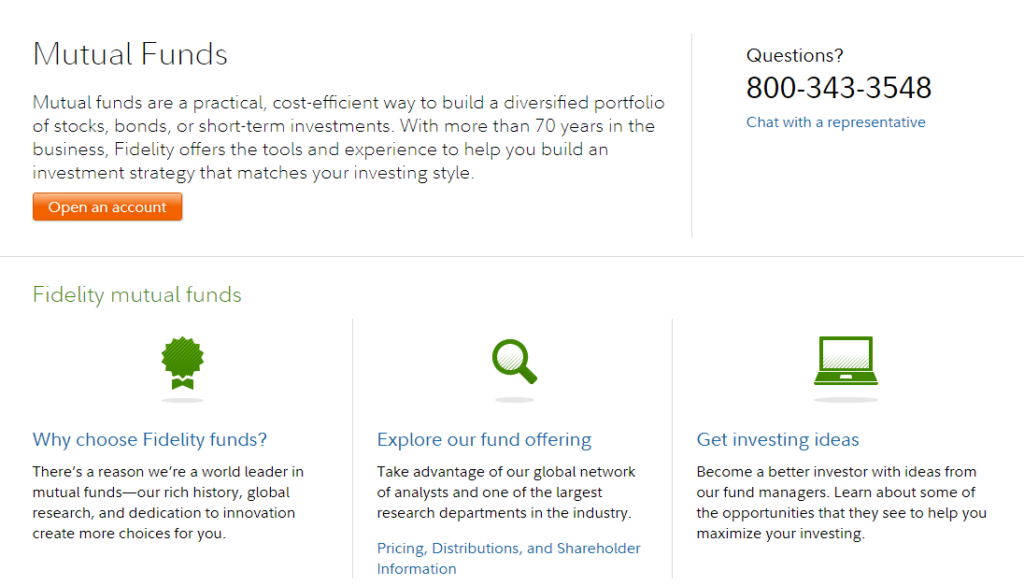
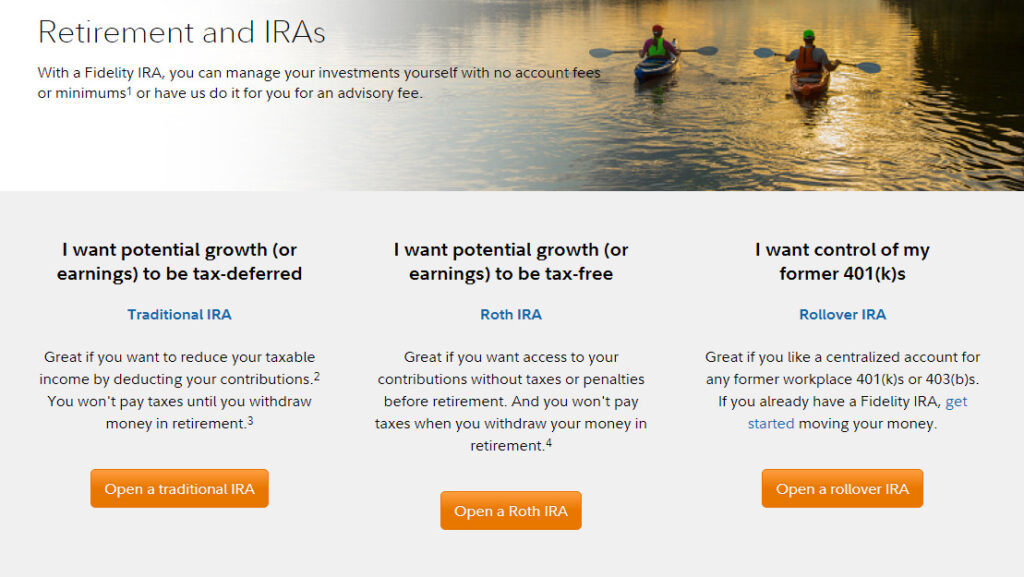
All Account Type
- Mutual Fund
- Retirement & IRAs
- Roth IRA
- Traditional IRA
- Rollover IRA
- Stocks and Trading
- Crypto
- Direct indexing
- Fixed income, bonds, and CDs
- ETFs
- Options
- Sustainable Investing
- Spending & Saving
- Cash Management Account
- Manage Accounts
- Digital Investing & Advice
- Portfolio Advisory Services Account
- Separately Managed Accounts
- 529 College Savings
- Health savings accounts
- Annuities
- Life Insurance
Some clients highlighted the usefulness of the research services offered by Fidelity Investments. More than 20 providers offer market research and analysis, from S&P Capital IQ to Recognia.
On Fidelity’s platform, stock quotes are given an Equity Summary Score that consolidates all of this research into an easily digestible score with which traders can make informed choices about their investments.
Traders are also given ETF snapshot pages which offer the Lipper and Morningstar ratings of the fund in question, along with a plethora of reports and ratings from Fidelity’s third-party analysts. While it might seem a bit daunting to have to go through 20 different providers to find your research, there are tools at Fidelity to help you whittle down which ones you want to hear from.
About Fidelity
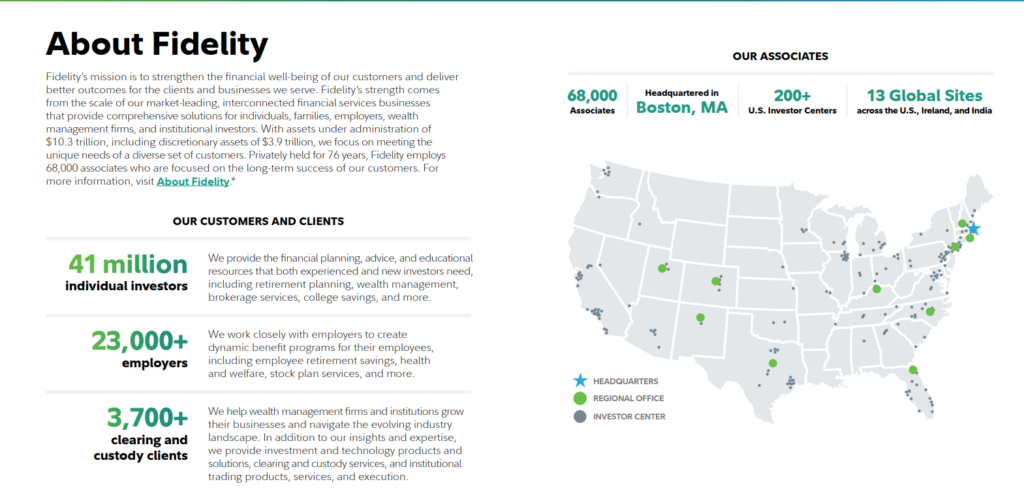
Fidelity’s mission centers on bolstering the financial well-being of its customers and delivering exceptional outcomes for the clients and businesses they serve. Their strength arises from the expansive scale of their market-leading, interconnected financial services businesses, which provide comprehensive solutions for individuals, families, employers, wealth management firms, and institutional investors. With an impressive $10.3 trillion in assets under administration, including $3.9 trillion in discretionary assets, Fidelity’s focus is on catering to the unique needs of a diverse clientele. As a privately held company for 76 years, Fidelity employs 68,000 devoted associates who are dedicated to ensuring the long-term success of their customers. For more information, visit About Fidelity.*
Customers and Clients
Fidelity supplies both experienced and new investors with the financial planning, advice, and educational resources they need, covering retirement planning, wealth management, brokerage services, college savings, and more.
In partnership with employers, Fidelity develops dynamic benefit programs for employees, including employee retirement savings, health and welfare, stock plan services, and more.
Fidelity aids wealth management firms and institutions in growing their businesses and adapting to the constantly evolving industry landscape. In addition to their invaluable insights and expertise, they provide investment and technology products and solutions, clearing and custody services, and institutional trading products, services, and execution.
Another thing Fidelity is known for is its customer service, with in-person guidance and free seminars for investors at their hundreds of branch locations throughout the US. At these seminars, traders can learn the ins and outs of their trading style, from reading technical analysis of reports to determining the best times to take Social Security.
In addition to that, Fidelity customers with sufficient qualifications are given access to Active Trader Services, in which they can benefit from 24/7 assisted trades available from Fidelity’s roster of qualified trading specialists. Investors have to have at least $25,000 in their Fidelity accounts, and make more than 120 trades over 12 months, so this service is really only for active investors.
When Fidelity customers really need help, they can take advantage of their phone, email and chat support, as well as their automated Virtual Assistant who can guide them through some frequently asked questions about the service.
These tools are regarded by users to equip investors with the required functionalities to make investments and manage their portfolios whether they be retirement or simply earning dividends.
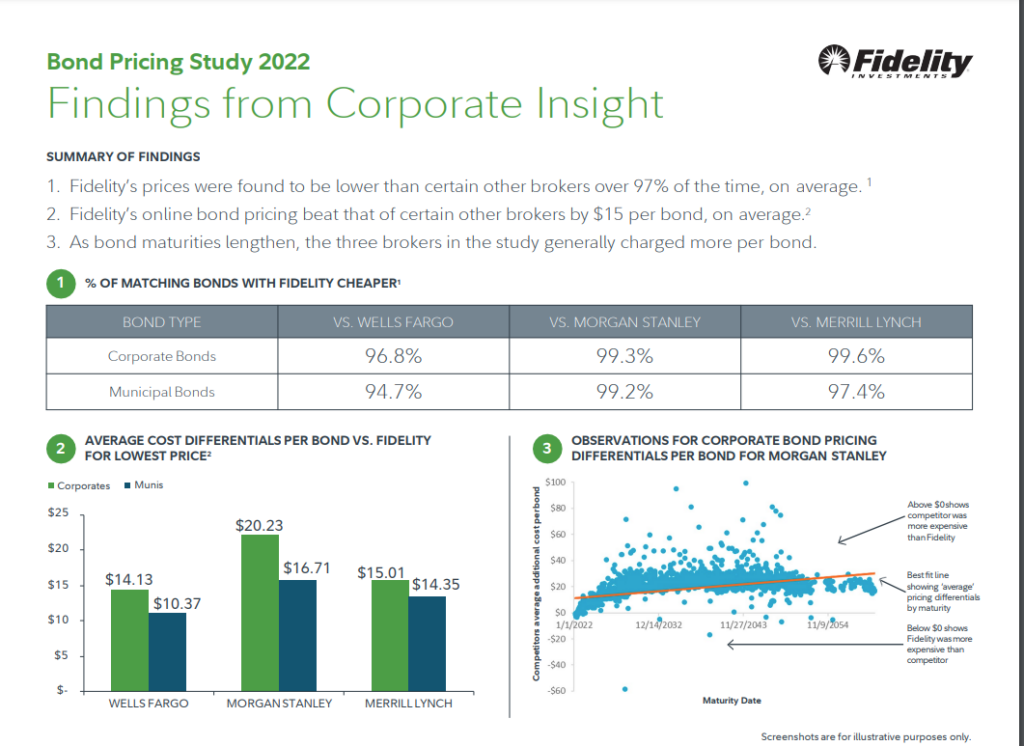
How Do You Open a Fidelity Account and What are the Requirements?
As with most other online traders, some users mentioned that it is relatively straightforward and fast to open an account. You just have to go online and fill out the application form, including your name, address, employment information, income and trading goals, and you’re good to go. If you have a joint account holder you want to add to the account, you must have them provide all the same information.
Once your basic information is entered, all you have to do is specify the source of your income, whether you have affiliations with other financial services companies, where you’ll deposit your initial funds to the “core position” of your account, and what account you want to open.
Some restrictions apply to non-US citizens, who are allowed to set up accounts but have to supply documentation to verify their ID (such as a passport). Interestingly enough, Fidelity offers accounts that are designed for minors, with their own restrictions, of course.
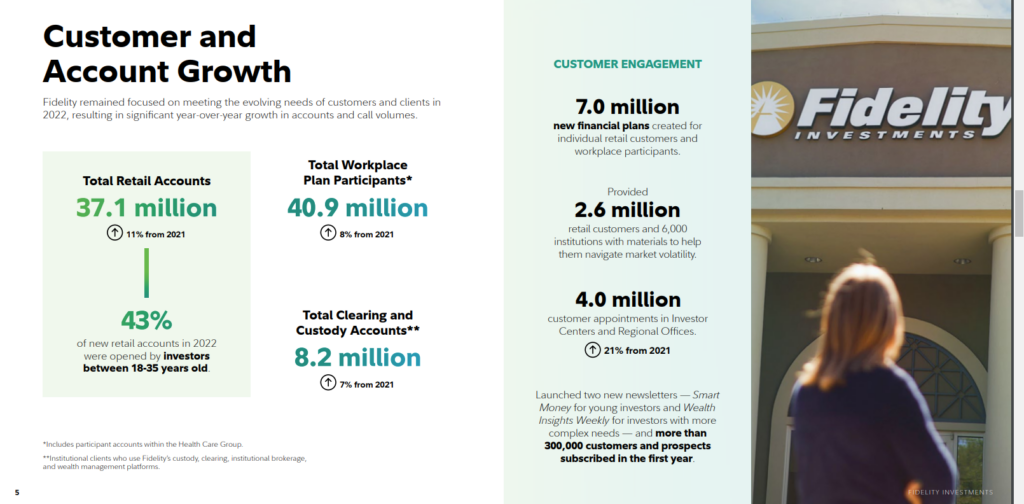
What Are the Rules for Trading on Fidelity?
Trading on Fidelity itself is a breeze, and benefits immensely from reasonably-priced commissions. $7.95 per trade isn’t the lowest we’ve seen, but given the breadth and depth of the research and trading tools you get, investors agree that the price is reasonable. (For options trading, you also pay $0.75 per contract). You can get cheaper rates elsewhere, but it’s doubtful they come with resources and platforms this plentiful.
When it comes to asset allocation, users mentioned that Fidelity offers a wide variety of funds that customers can select from.
Fidelity itself seems to do all the homework for their traders, really. All of their funds and portfolios benefit from macroeconomic, quantitative and fundamental analyses from some research firms which was appreciated by some users.
That said, there are a few downsides to Fidelity’s trading requirements and rules that keep perfection just out of reach. For instance, Fidelity’s account minimum balance is rather high at $2,500, especially when you can find many brokers that require no minimums. Granted, IRA accounts require no account minimum on Fidelity, but that only gets you so far.
Fortunately, there are ways to get around the account minimum issue: Fidelity lets you sign up for automatic investment installments of $200 per month (or $600 per quarter) to help you get started without needing that big chunk of change right up front.
Also, as good as their trading platform is, there are a few restrictions that can be annoying to work around. For instance, many of their most premium features are reserved only for traders who are sufficiently active, thereby cutting off their most useful software and programs to those who will trade enough to make it worth it. It makes sense to incentivize more active traders, but that can get frustrating if you don’t quite trade as much as they want you to.
What Kind of Trader is Fidelity Best For?
As mentioned, Fidelity seems to appeal most acutely to traders looking to get the most out of their retirement accounts. Given their reasonable trade commissions and their high number of commission-free ETFs and no-transaction-fee mutual funds, investors believe that the tools offered by the Fidelity platform are reasonable for managing their retirement accounts.
However, Fidelity also works quite well for active traders who want to take advantage of high-quality research tools and a user-friendly, features-heavy trading platform. Fidelity’s own software has these qualities in spades, and this makes them a formidable resource for those who want to play the market and see how they fare.
If you’re a more aggressive trader, the relatively low trade cost combined with their robust online trading platform makes it easy for hands-on traders to take risks and monitor their investments with much lower risk. To wit, the last decade has seen an average of 8.40% return on investment for their traders, thanks to the actively managed nature of their Fidelity Funds.
So in the end, users with different needs and investment goals need to find out themselves whether the platform is suitable for them. Retirement accounts benefit from their closely monitored and heavily researched funds, while active traders can do a lot with the fantastic trading platform and reasonable commissions Fidelity provides them.
Other Good Products
If you like the idea of active, human management of your accounts, but don’t care as much about being hands-on, you might want to try Vanguard. More conservative traders can benefit greatly from their first-class command of index funds, making it perhaps even more advantageous for traders hoping to invest in their retirement, and they offer personal advisory services, as well.
If you’re looking for a platform that gives you the freedom to explore trading ideas without sinking nearly as much money, look at ThinkOrSwim by TD Ameritrade. Ameritrade’s combination of Trade Architect and ThinkOrSwim have no trading requirements, so you don’t have to risk as much money upfront.
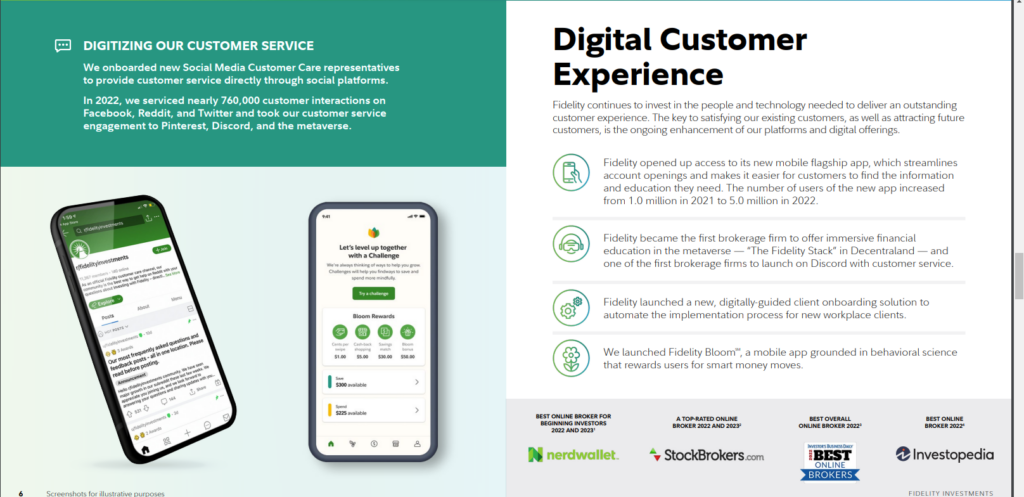
Another good option for saving money could be TradeKing. TradeKing charges $13 less for broker assisted trades, and $40 less for mutual fund trades.
E*Trade offers nice savings on those kinds of trades, too. Plus, E*Trade has a minimum deposit of just $500, compared to Fidelity’s $2,500.
Charles Schwab is a similar in terms of robustness of the platform and costs, but it has the upper hand in the number of commission-free ETFs it offers (91 to 229). Also, Charles Schwab has about 100 more brick-and-mortar retail locations than Fidelity does, so it’s easier to walk in and talk to a person when you have a question.
But if having accessible retail locations is a top priority for you, then look into Scottrade.
Stash Invest, meanwhile, offers more options for traders who want to make sure they have reputable mobile control of their accounts, but want something different than Fidelity. Stash works chiefly through your mobile app, and grants you instant control over your vast array of investments with the push of a button.

- View extended hours quotes available 7:00 am into market open, and until 8:00 pm
after market close - Take action: trade, add to watch list, set an alert, see your position details, launch
screeners, or open the option chain - Click through the navigation options for research tools and data, or choose View All to
see everything in a one page view - Review detailed quote information including P/E ratio, dividend info, and more
- Large summary chart for a clear and quick look into the security’s history. Use Chart+
for advanced charting features and to save layouts - Dedicated space created for short interest data

- Use the new advanced chart via the Chart+ tab
- View in table mode and download including indicators you added
- Save your default layout and additional layouts you prefer
- Choose your display style, turn on extended hours or dual axis when comparing
- Search and add your favorite indicators
- Select technical patterns and events including support and resistance
- Manage your saved layouts
- Select either axis to scale them. Zoom using your mouse wheel, or pinch and zoom on a
touchscreen - Select the indicator panel and expand it to have more working room
- Use custom date selector to pin-point desired timeframes
Fixed Income Analysis Tool: Cash Flow Calculation by Position

Fidelity’s new issue certificate of deposit (CD) offerings via the mobile app!
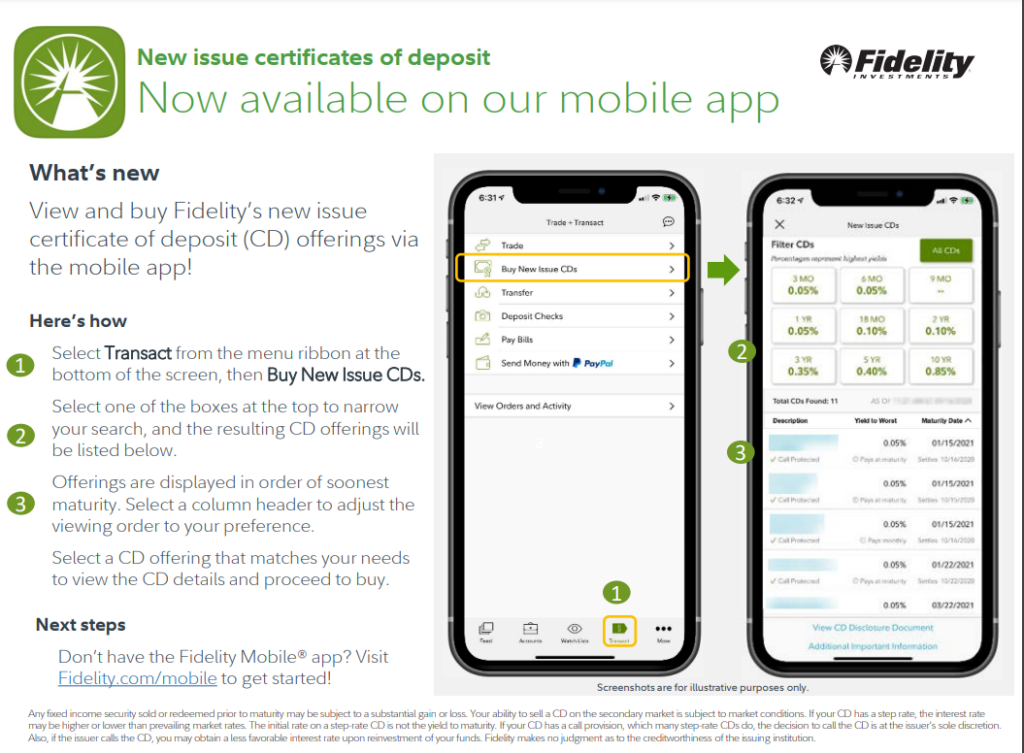
Explore and purchase Fidelity’s new issue certificate of deposit (CD) offerings, now available through the mobile app!
Follow These Simple Steps:
- Tap ‘Transact’ on the menu ribbon at the bottom of the screen, then select ‘Buy New Issue CDs’.
- To refine your search, choose one of the boxes at the top, and the corresponding CD offerings will be displayed below.
- Offerings are presented in ascending order of maturity. To modify the viewing order, simply tap a column header to suit your preference.
- Browse the offerings and select a CD that aligns with your investment goals. View the CD details and proceed to purchase with ease.
Innovations in Digital Assets: A Tale of Expanded Offerings & New Horizons
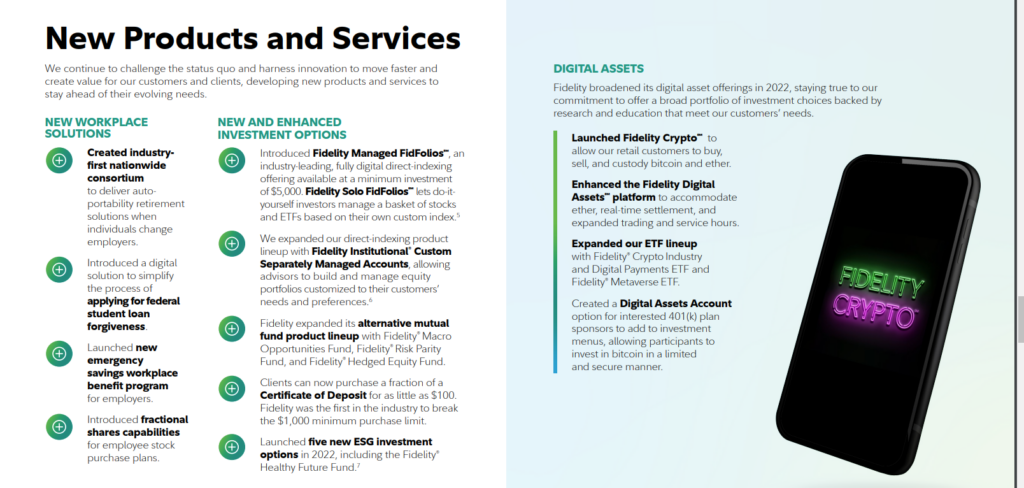
As a testament to their unwavering pledge, Fidelity’s foray into the digital realm saw a remarkable expansion in 2022, encompassing a diverse array of investment options, fortified by in-depth research and educational support to cater to their clientele’s multifarious requirements.
Introducing a Vanguard of Investment Alternatives
Fidelity proudly unveiled its Managed FidFolios℠, a trailblazing, entirely digital direct-indexing solution, accessible with a modest initial investment of $5,000. For the self-reliant investor, Fidelity Solo FidFolios℠ offers the ability to craft a collection of stocks and ETFs, uniquely tailored to their personalized index.5
In a bold stroke, their direct-indexing offerings were enriched by the addition of Fidelity Institutional® Custom Separately Managed Accounts. This innovative service empowers advisors to conceive and supervise equity portfolios, custom-fitted to their clients’ preferences and necessities.6
Fidelity’s alternative mutual fund repertoire flourished with the arrival of the Fidelity® Macro Opportunities Fund, Fidelity® Risk Parity Fund, and Fidelity® Hedged Equity Fund. In an unprecedented move, clients now have the opportunity to acquire fractional Certificates of Deposit for a mere $100, breaking the industry’s erstwhile $1,000 minimum purchase threshold.
In their unwavering commitment to sustainable investing, 2022 witnessed the launch of five new ESG investment options, including the noteworthy Fidelity® Healthy Future Fund.7
Revolutionizing Workplace Solutions
Fidelity broke new ground by creating an industry-first nationwide consortium, facilitating auto-portability retirement solutions upon employer transitions. Moreover, a digital approach to streamline the federal student loan forgiveness application process was introduced.
Employers can now avail of an innovative emergency savings workplace benefit program, and fractional share capabilities have been extended to employee stock purchase plans.
Embracing the Future with Unparalleled Innovations
Fidelity remains steadfast in challenging the conventional norms and embracing cutting-edge advancements to deliver value to their customers and clients. As they develop novel products and services, they stay ahead of the curve, anticipating their evolving needs.
Enter Fidelity Crypto℠: a groundbreaking platform empowering retail customers to buy, sell, and secure bitcoin and ether. Concurrently, the Fidelity Digital Assets℠ platform has been augmented to incorporate ether, real-time settlement, and extended trading and service hours.
Fidelity’s ETF lineup burgeoned with the Fidelity® Crypto Industry and Digital Payments ETF and Fidelity® Metaverse ETF. Furthermore, a Digital Assets Account option was crafted for interested 401(k) plan sponsors to augment their investment menus, allowing plan participants to invest in bitcoin in a circumscribed, yet secure manner.
A Few Final Thoughts
Whether you’re looking to set up your retirement, or just want to start trading stocks and options, users appreciated the relatively low costs and feature suite offered by the platform. Even if you’re not looking to set up your retirement quite yet, high-volume traders will appreciate Fidelity’s advanced tools and support for active traders.
Traders who want to be more hands-on in their trading career would do well to take advantage of Fidelity’s fantastic trading software, if nothing else. That, combined with their stellar research, gives traders an unprecedentedly good view of the market forces they face.
All in all, Fidelity’s quality is thoroughly mid-range and reputable, while not being completely impressive. Their commissions and trade fee costs are reasonably low, though cheaper solutions can be found elsewhere, for instance. However, for traders who want to learn about and understand the stock market, their research and amazing platform make it worth your time.
FAQs
How long does it take for cash to settle at Fidelity?
The settlement period for most types of securities at Fidelity is two business days, commonly referred to as T+2. This means that after you sell a security, the cash from the sale will be available to you two business days later.
How to trade penny stocks on Fidelity?
Fidelity does allow the trading of penny stocks, but there are certain limitations and requirements. In order to trade penny stocks on Fidelity, you need to have at least $2,500 in your account and be approved for margin trading. Additionally, you'll need to call Fidelity's trading desk to place your order, as penny stocks are not available for online trading.
Is Fidelity a fiduciary?
Fidelity does have fiduciary responsibilities to its clients, but this will depend on the specific services and products you are using. For example, if you work with a Fidelity financial advisor, they will have a fiduciary duty to act in your best interest. However, if you are simply using Fidelity's online trading platform, the relationship may not be considered a fiduciary one.
Does Fidelity pay transfer fees?
Fidelity does not charge any fees for transferring assets to or from another brokerage firm. However, the firm you are transferring from or to may charge a fee for the transfer.
Does Fidelity use Zelle?
Fidelity does not currently support Zelle as a payment method for its brokerage accounts.
Which Fidelity fund owns SpaceX?
As far as we know, Fidelity does not currently have a mutual fund that owns shares of SpaceX. However, they do have a number of funds that invest in aerospace and defense companies, which may include companies like SpaceX.
What are Fidelity extended hours?
Fidelity offers extended hours trading, which allows you to place trades outside of regular market hours. Pre-market trading is available from 7:00 am to 9:28 am EST, and after-hours trading is available from 4:00 pm to 8:00 pm EST.
Fidelity does participate in securities lending, which means that they may lend out shares held in your account to other investors. However, they have a number of safeguards in place to protect your account, and you can opt out of securities lending if you choose.
Where are Fidelity Investments office locations?
Fidelity has offices in a number of locations throughout the United States and around the world. You can find a list of their locations on their website.
Is Fidelity FDIC insured?
Fidelity is a member of the Securities Investor Protection Corporation (SIPC), which provides insurance protection for up to $500,000 in securities and cash held in a brokerage account. However, this is not the same as FDIC insurance, which is specifically for bank deposits.
Why Fidelity?
Fidelity Investments is one of the many available options. The platform claims to have a wide investment offering, competitive pricing, customer service, as well as educational and research resources.
You can sell fractional shares on Fidelity's online trading platform just like you would sell whole shares. However, if you have a large number of fractional shares, it may be more efficient to sell them in one transaction through Fidelity's brokerage services.
StockHax strives to provide unbiased and reliable information on cryptocurrency, finance, trading, and stocks. However, we cannot provide financial advice and urge users to do their own research and due diligence.
Read More